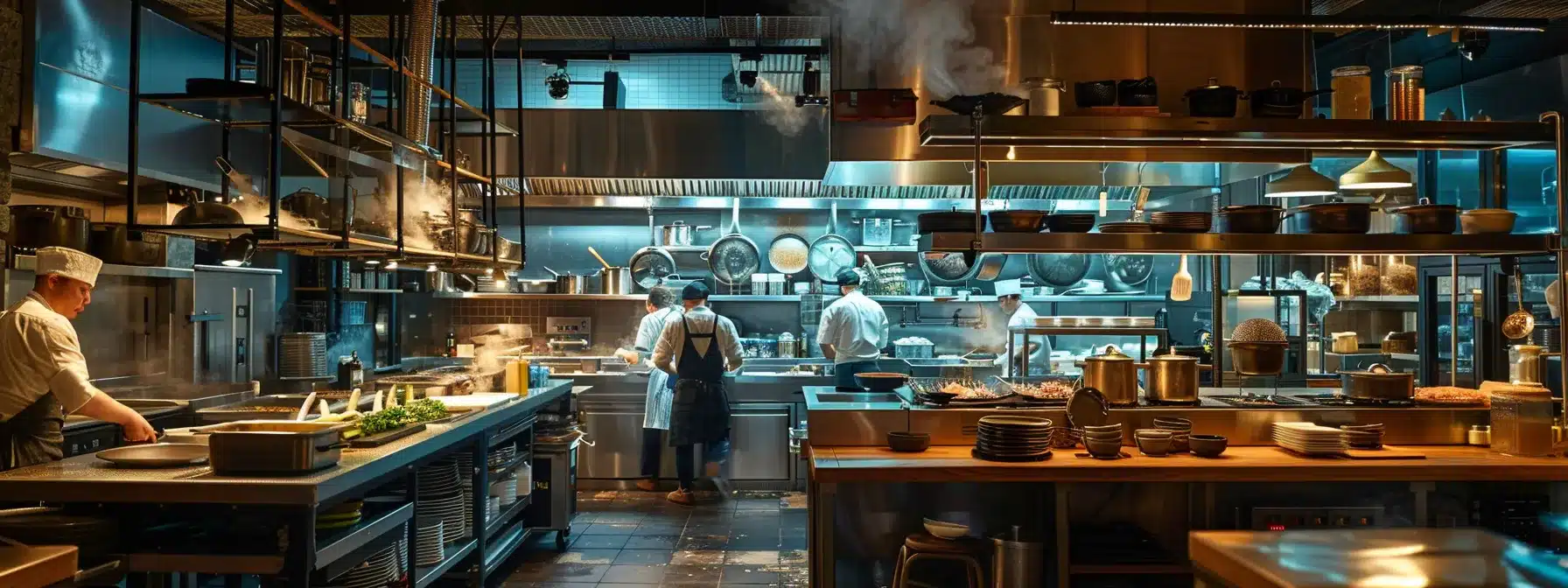Are you struggling to boost your food business revenue in a competitive market? Research shows that the average open rate for food industry emails hovers around 20%, revealing a significant opportunity for improvement. This article will explore how utilizing an email marketing platform and effective automation strategies can enhance your campaign effectiveness. Readers will learn to select the right marketing automation software, build a high-converting email list, and craft engaging automated campaigns. By implementing these strategies, food business owners can address low customer engagement and drive sales growth efficiently.
Key Takeaways
- email automation enhances customer engagement through personalized marketing strategies
- integrating software improves campaign effectiveness and maintains accurate consumer data
- segmentation strategies enable targeted messaging, increasing engagement and conversion rates
- measuring key performance metrics helps optimize email campaigns for better revenue growth
- using incentives and promotions boosts email sign-ups and fosters customer loyalty
Understanding Email Automation Software for Food Businesses

Email automation software is essential for food businesses looking to enhance brand awareness and streamline marketing campaigns. This subsection explores the basic principles of email automation, benefits that enhance revenue through improved email open rates and customer engagement, and common challenges that businesses face in their implementation. Practical solutions will also be discussed to help businesses maintain a strong reputation and create effective calls to action.
The Basics of Email Automation in the Food Industry
Email automation plays a vital role in enhancing the marketing strategy for food businesses. By utilizing tools that integrate seamlessly with platforms like WooCommerce, businesses can create targeted email marketing campaigns that resonate with their audience. This approach allows for personalized email content that not only boosts engagement but also drives sales by keeping customers informed about promotions, new menu items, and special events.
Benefits of Email Automation for Food Business Revenue
Email automation software helps food businesses significantly improve their revenue by enhancing the customer experience through targeted marketing strategies. By increasing the email open rate, restaurants can effectively communicate promotions, new dishes, and special events, thereby encouraging repeat visits. Furthermore, with the right approach, businesses can lower the unsubscribe rate, ensuring a loyal customer base that continuously engages with their brand.
- Increase email open rates through targeted promotions.
- Enhance customer experience with personalized content.
- Reduce unsubscribe rates, fostering loyalty.
Common Challenges and How to Overcome Them
Food businesses often face challenges in effectively utilizing ecommerce email marketing and marketing automation tools. A common issue is the integration of marketing software with existing systems, which can lead to data discrepancies and hinder campaign effectiveness. To address these obstacles, businesses should prioritize selecting user-friendly platforms that facilitate seamless integration, ensuring that marketing automation operates smoothly and consumer data remains accurate.
- Identify integration issues with current systems.
- Choose user-friendly marketing software for ease of use.
- Maintain accurate consumer data for effective email marketing.
Now that the basics of email automation software are clear, the next step is to choose the right tools for your food business. A well-selected program can transform how you connect with customers and grow your brand.
Selecting the Right Email Automation Software

Selecting the right email automation software is vital for maximizing restaurant marketing efforts. Key features to look for in email marketing tools, such as automation capabilities and analytics, can significantly enhance email marketing campaigns. Comparing top platforms allows food businesses to identify suitable options that integrate seamlessly with existing systems, ensuring effective communication and improved customer engagement.
Key Features to Look for in Email Marketing Tools
When selecting email marketing tools for a food business, it is essential to prioritize features that enhance brand engagement and email marketing performance. Key functionalities such as audience segmentation allow businesses to tailor messages to specific customer groups, ensuring that communications are relevant and timely. Additionally, the ability to collect and manage email addresses efficiently supports lead generation efforts, ultimately driving revenue growth by nurturing relationships with potential and existing customers.
Comparing Top Email Automation Platforms for Food Businesses
Comparing top email automation platforms for food businesses is essential to implement an effective email marketing strategy. Each platform offers different email marketing services that can impact workflow efficiency and overall performance. By analyzing key statistics such as email open rates and click-through rates of various software options, businesses can make informed decisions that enhance customer engagement and drive revenue growth.
| Platform | Key Features | Email Marketing Statistics |
|---|---|---|
| Mailchimp | Automation workflows, audience segmentation, analytics | Average open rate: 21.33% |
| Constant Contact | Event marketing, social media integration, reporting | Average open rate: 25.69% |
| SendinBlue | SMS marketing, CRM features, dynamic content | Average open rate: 25.00% |
Integration With Existing Systems and Platforms
Integrating email automation software with existing systems and platforms is essential for implementing effective email marketing strategies in the food industry. This integration ensures seamless communication across restaurant marketing software, enabling businesses to track customer behavior and optimize their outreach efforts based on marketing benchmarks. For instance, a restaurant can utilize automated emails to send personalized coupons during specific promotional periods, thereby improving open rates and fostering customer loyalty.
- Understanding the importance of integration for email marketing efficacy.
- Utilizing restaurant marketing software to track customer interactions.
- Implementing automated emails to enhance customer engagement with personalized offers.
Choosing the right email automation software sets the stage for success. Next, it is time to focus on building a high-converting email list that turns prospects into customers.
Building a High-Converting Email List

Building a high-converting email list is essential for food businesses aiming to leverage email automation software effectively. Strategies for attracting subscribers in the food industry include utilizing sign-up incentives and promotions that enhance engagement. Additionally, encouraging email sign-ups through social media channels can significantly boost open rates. Each of these methods contributes to personalized marketing efforts, maximizing the potential of platforms like ActiveCampaign.
Strategies for Attracting Subscribers in the Food Industry
Attracting subscribers in the food industry requires strategic approaches that resonate with customers. Offering incentives such as discounts on their first online order or exclusive access to menu previews can encourage sign-ups. Additionally, utilizing restaurant email analytics to understand customer preferences enables businesses to send targeted transactional emails, which enhance engagement and foster a loyal customer base.
Utilizing Sign-Up Incentives and Promotions
Utilizing sign-up incentives and promotions is a strategic approach for food businesses aiming to build a high-converting email list. Offering discounts or exclusive access to new menu items in return for joining the mailing list can significantly increase subscriber numbers. By leveraging these incentives, businesses can enhance their email marketing metrics, as a larger, engaged audience will allow for improved automation and more effective promotional campaigns, ultimately driving revenue growth.
Encouraging Email Sign-Ups Through Social Media Channels
Encouraging email sign-ups through social media channels is a strategic approach that food businesses can leverage to build a high-converting email list. By integrating SMS marketing campaigns and promoting sign-up incentives on platforms like Facebook and Instagram, businesses can effectively capture the interest of potential loyal customers. Utilizing tools such as Omnisend can facilitate seamless email marketing automation, helping to analyze customer behavior and tailor messages that resonate with the audience.
- Promote sign-up incentives on social media platforms.
- Integrate SMS marketing campaigns for broader reach.
- Utilize tools like Omnisend to enhance email marketing automation.
- Analyze customer behavior to tailor engaging messages.
An email list is just the beginning. The real impact comes from crafting messages that connect, engage, and convert.
Crafting Effective Automated Email Campaigns

Effective email marketing for food businesses hinges on key strategies such as personalization techniques that engage customers, adherence to best practices for timing and frequency, and segmentation strategies for targeted messaging. Additionally, crafting compelling email content, including strong calls to action (CTAs), and utilizing drag and drop design features for mobile device compatibility are essential. These components contribute to creating high-converting landing pages that drive revenue growth.
Personalization Techniques to Engage Customers
Personalization techniques are vital for increasing customer engagement in email campaigns, as they help to capture the attention of the target audience. By utilizing data-driven insights, food businesses can tailor their messages based on customer preferences and behaviors, resulting in reduced bounce rates and increased click-through rates. This level of customization not only enhances customer satisfaction but also fosters a higher return on investment, turning occasional diners into loyal patrons.
Timing and Frequency Best Practices
Understanding timing and frequency best practices is essential for maximizing the effectiveness of restaurant email marketing automation. Studies have shown that sending emails during peak engagement times can significantly improve open rates, aligning with general email marketing benchmarks that suggest targeting customers around lunch or dinner hours when they are more likely to consider dining options. By establishing a consistent schedule for sending promotional content and updates, businesses can enhance customer satisfaction and ensure that their automated email campaigns reach the audience at the right moment, ultimately driving revenue growth.
Segmentation Strategies for Targeted Messaging
Segmentation strategies are crucial for food businesses looking to maximize the impact of their automated email campaigns. By categorizing customers based on factors such as dining preferences, order history, or geographical location, businesses can tailor their messaging to meet specific needs and interests. For instance, a restaurant that regularly analyzes customer data may discover that certain segments respond better to promotions for new menu items, allowing for targeted campaigns that yield higher engagement and conversion rates.
Designing Compelling Email Content and CTAs
Designing compelling email content and effective calls to action (CTAs) is essential for food businesses looking to maximize revenue through email automation software. Engaging content that highlights special promotions, seasonal dishes, or exclusive events can capture the attention of recipients, while clear and concise CTAs guide customers towards taking action, such as making a reservation or ordering online. By focusing on the unique aspects of their offerings and utilizing strong language in CTAs, businesses can enhance customer engagement and drive higher conversion rates, ultimately leading to increased profitability.
Effective email campaigns lay the groundwork, but the true potential of automation lies beyond that foundation. By delving into advanced strategies, businesses can unlock new revenue streams and elevate their overall performance.
Maximizing Revenue Through Advanced Automation Strategies

Implementing automated upselling and cross-selling strategies can significantly enhance revenue by encouraging customers to explore complementary products. Re-engagement campaigns are essential for reconnecting with lapsed customers, rekindling their interest and driving return visits. Additionally, utilizing behavioral triggers allows for timely communications that cater to customer actions, ensuring messages reach the audience when they are most likely to engage. Each of these strategies provides valuable insights into maximizing the effectiveness of email automation software for food businesses.
Implementing Automated Upselling and Cross-Selling
Implementing automated upselling and cross-selling strategies allows food businesses to effectively increase average order value and enhance customer satisfaction. By utilizing email automation software, restaurants can send targeted offers that suggest complementary items based on previous purchases; for example, recommending a dessert when a customer orders a main course. Such personalized recommendations not only drive additional revenue but also create a seamless dining experience that encourages repeat visits.
- Utilize email automation to identify upselling opportunities.
- Recommend complementary items based on purchase history.
- Enhance customer experience by providing tailored suggestions.
Re-Engagement Campaigns for Lapsed Customers
Re-engagement campaigns for lapsed customers are a powerful tool for food businesses wanting to boost revenue through email automation software. By targeting individuals who have not interacted with the brand for a specified period, restaurants can craft tailored messages that address their absence, such as offering exclusive discounts or highlighting new menu items. This approach not only rekindles interest among past customers but also helps in building a loyal customer base, ultimately driving repeat visits and enhancing overall sales.
Utilizing Behavioral Triggers for Timely Communications
Utilizing behavioral triggers for timely communications allows food businesses to engage customers right when they are most receptive. For instance, sending automated emails after a customer makes a purchase can recommend complementary items, enhancing the overall dining experience. By closely analyzing purchasing behaviors, businesses can tailor their outreach to suggest relevant promotions, thus improving customer satisfaction and boosting revenue.
| Behavioral Trigger | Action Taken | Expected Outcome |
|---|---|---|
| Post-Purchase | Recommend complementary items | Increased average order value |
| Abandoned Cart | Send reminder email with discount | Recover lost sales |
| Re-Engagement | Offer exclusive discounts | Reconnect with inactive customers |
With automation in place, the next challenge comes into focus. Understanding how to measure success will clarify what works and what needs to change.
Measuring and Analyzing Email Automation Success

Measuring and analyzing email automation success is vital for food businesses aiming to boost revenue. Key metrics, such as open rates and click-through rates, provide insight into campaign performance. Additionally, employing A/B testing allows businesses to optimize their campaigns based on real-time feedback. Adjusting strategies using data insights ensures continuous improvement and relevance in customer communications.
Key Metrics to Track Performance
Measuring the success of email automation software in food businesses hinges on key performance metrics that gauge engagement and effectiveness. Tracking open rates reveals how well subject lines and sender names resonate with the audience, while click-through rates indicate how compelling the email content is. Additionally, monitoring conversion rates helps assess whether the email campaigns lead to desired actions, such as reservations or online orders, directly impacting revenue growth and customer retention in the food industry.
A/B Testing to Optimize Campaigns
A/B testing is a powerful method for optimizing email campaigns, particularly in the food business sector where precise marketing strategies can significantly boost revenue. By experimenting with different subject lines, designs, or call-to-action buttons, businesses can identify what resonates best with their audience. This data-driven approach not only enhances engagement metrics like open rates and click-through rates but also ensures that email marketing efforts are aligned with customer preferences, ultimately driving more conversions.
- Engage in A/B testing to determine effective subject lines.
- Experiment with different email designs to enhance visual appeal.
- Analyze call-to-action effectiveness for improved customer responses.
Adjusting Strategies Based on Data Insights
Adjusting strategies based on data insights is critical for food businesses leveraging email automation software to enhance their revenue. By analyzing key performance metrics such as open rates and click-through rates, businesses can identify which email campaigns resonate most with their audience. For instance, if data reveals that emails sent on weekends achieve higher engagement, a restaurant can shift its promotional efforts to that timeframe, ultimately improving customer interaction and driving sales.
Conclusion
Email automation software is a powerful tool for food businesses seeking to enhance revenue and customer engagement. By implementing targeted marketing strategies, businesses can increase email open rates and foster loyalty among their customers. Overcoming common challenges and selecting the right software enables efficient campaigns that drive sales and build strong relationships. Ultimately, leveraging email automation unlocks significant opportunities for growth in the competitive food industry.





